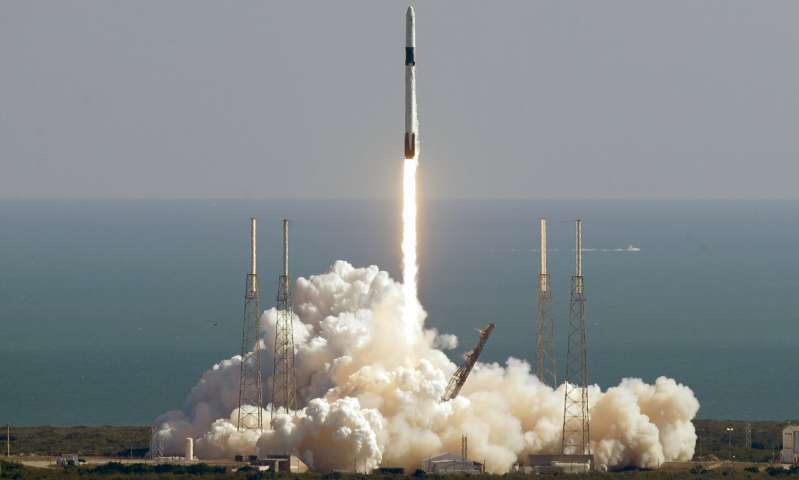Washington: SpaceX has launched a Dragon spacecraft with more than 2,585 kg of NASA cargo and science investigations, including studies of malting barley in microgravity, the spread of fire, and a group of 40 genetically enhanced ‘mighty mice’ to study bone and muscle loss.
Launched on a Falcon 9 rocket from Cape Canaveral Air Force Station in Florida at 12.29 p.m. EST Thursday, the spacecraft is scheduled to arrive at the orbital outpost December 8.
This delivery, SpaceX’s 19th cargo flight to the space station under NASA’s Commercial Resupply Services contract, will support dozens of new and existing investigations.
Among the scientific investigations Dragon is delivering include the ‘mighty mice in space’ project. NASA believes that the study could support the development of therapies for a wide range of conditions that cause muscle and bone loss on Earth.
The Hyperspectral Imager Suite (HISUI), next-generation, hyperspectral Earth imaging system, was among other investigations.
Every material on Earth’s surface – rocks, soil, vegetation, snow/ice and human-made objects – has a unique reflectance spectrum.
HISUI provides space-based observations for tasks such as resource exploration and applications in agriculture, forestry and other environmental areas, NASA said.
The delivery also includes a study to compare malt produced in space and on the ground for genetic and structural changes.
Understanding how barley responds to microgravity could identify ways to adapt it for nutritional use on long-duration spaceflights, NASA said.
The Confined Combustion investigation will examine the behaviour of flames as they spread in differently shaped confined spaces in microgravity.
Studying flames in microgravity gives researchers a better look at the underlying physics and basic principles of combustion by removing gravity from the equation, NASA said.
